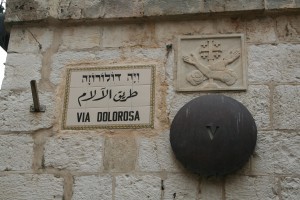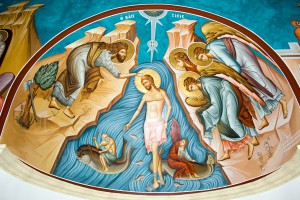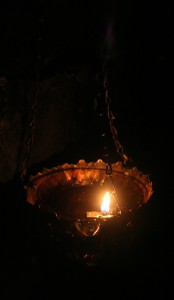My favorite part of Israel was Galilee, a region in the northern part of the country. What surprised me most was how beautiful and green it was. I had expected Israel to be mostly dry and rocky desert, but Galilee is lush and fertile. Part of the reason was that I visited in January after a week of good rain. But our guides said that Galilee has always been the greenest part of Israel, a place of mountain peaks, evergreen forests, lakes and many streams.
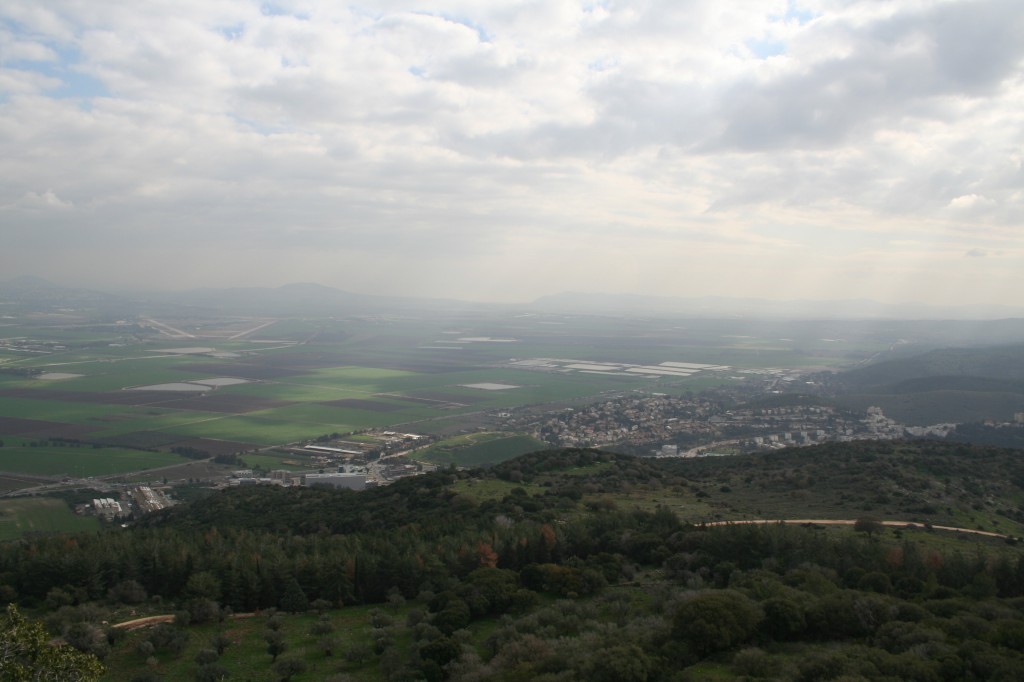
This was the region, of course, where Jesus of Nazareth spent the majority of his life. We know very little of the time before his public ministry began around the time he was 30 years of age, but by tradition he spent it working as a carpenter in the village of Nazareth (which in his day was a small town indeed, perhaps only about the size of two football fields). It was fascinating to me to drive the roads of Galilee and see scenes like the one below, realizing that Jesus likely saw a landscape that was very similar.
And the Sea of Galilee itself is among the loveliest of all the sites in Galilee. Contrary to its name, it’s actually a freshwater lake fed by the snows of Mount Hermon to the north. Also known as Lake Gennesaret, it’s 13 miles long and 7.5 miles wide and lies in a deep crevice created by earthquakes. Those same earthquakes created hot sulfur springs around the shore, and for millenia the sick have flocked to these springs for their healing properties. Some scholars have speculated, in fact, that the large number of sick people healed by Jesus were in the area because of wanting to take advantage of these healing springs.
Out of the three years of Jesus’ public ministry, the majority took place in the northern part of Galilee (during his day, the southern part of the lake was surrounded by mosquito-filled swamps). Then as now, the lake provided life-giving water in an often dry and barren land. The city of Jerusalem would have seemed very far away, for it would have taken about four days of walking to get from northern Galilee to the holy city.
Galilee has another water source closely tied to the life of Jesus: the Jordan River. Our guides told us that it’s a river that holds more history than water (but in a dry country, of course, even a smallish river looms large). Today it doesn’t run all the way to the Dead Sea because heavy agricultural use, but in Jesus’ day it flowed from Galilee to the Dead Sea.
The Yardenet Baptism Site, which is located at the spot where the Jordan River emerges from the lake, is the most popular spot for baptisms in Israel today. This wouldn’t have been the site of Jesus’ baptism, for that likely was near Jericho, northwest of Jerusalem. It’s a lovely spot, nevertheless. The spot features separate bays where groups can gather for immersion in the river. Despite the nearby highway, you can hear birds singing amid the trees and greenery.
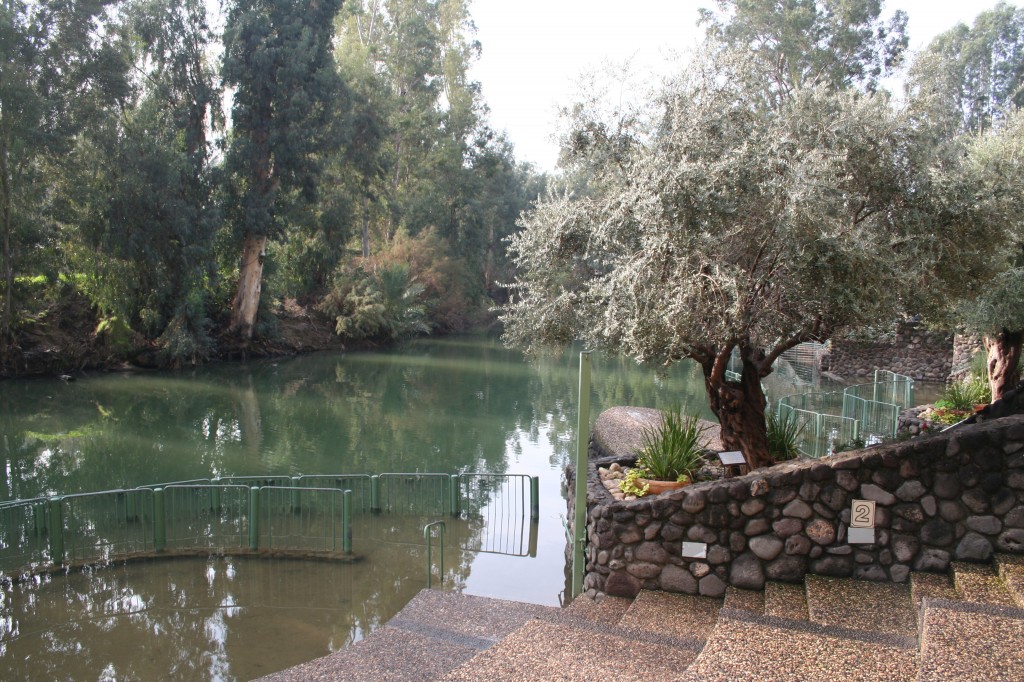
The walls of the site are lined with the baptism story written in more than 60 languages, and as I walked through the area, I could hear Russian, Chinese and English spoken by my fellow visitors. Here’s what charmed me the most: this plaque donated by an organization called YWAM Hawaii, which tells the story of Jesus’ baptism in a somewhat unconventional way:
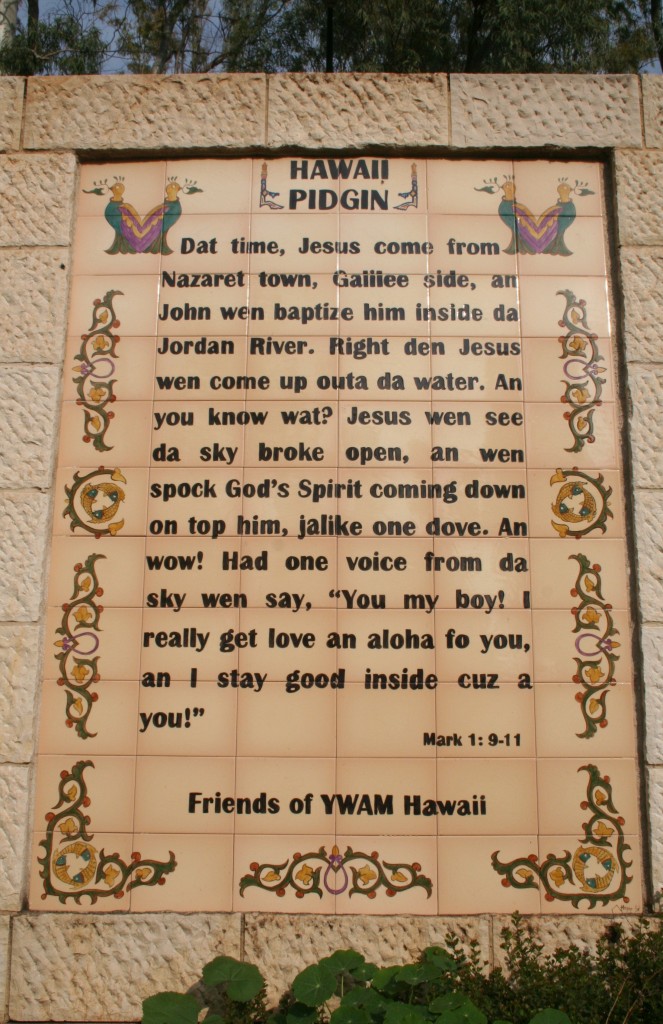
Those plaques in many languages bear witness to the fact that while the story of Jesus began in this region, it belongs to the entire world. That story gets told and retold. Sometimes it’s misunderstood. Sometimes it gets translated in peculiar ways (“You my boy!”). But it continues to inspire and to draw people to the Jordan from far away, seekers who want to be immersed, to be born again, to come into new life. And that’s something worth celebrating, in whatever language one speaks.


